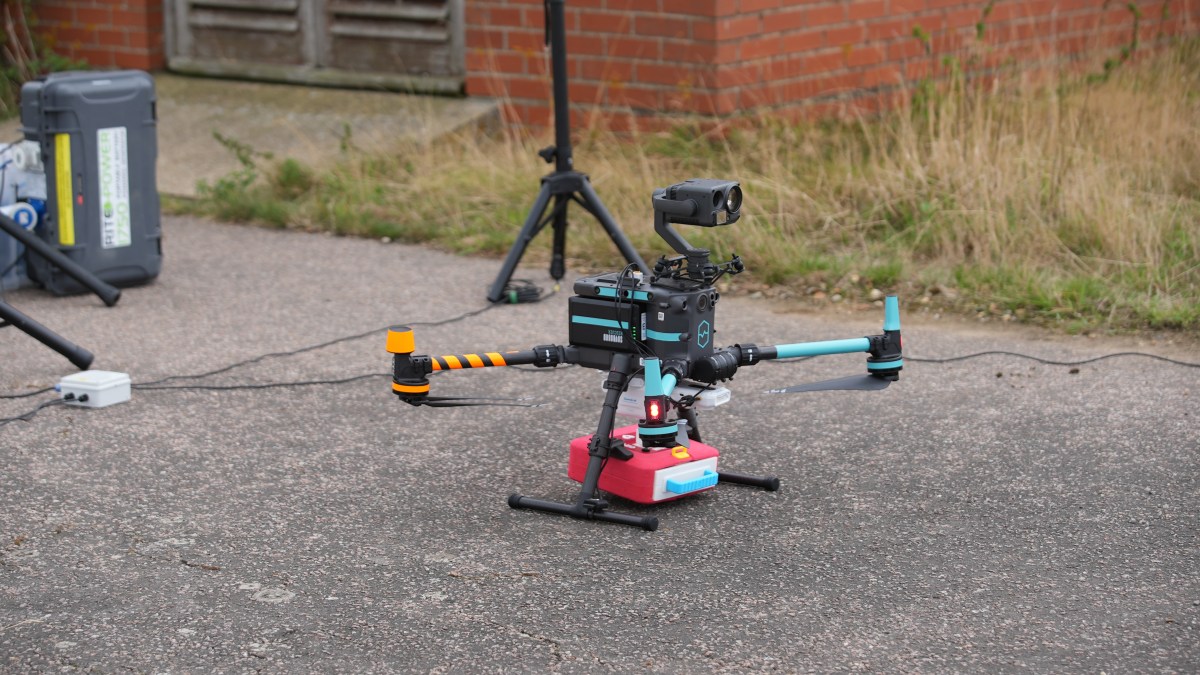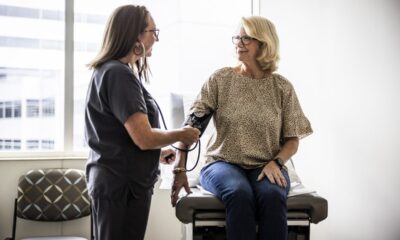Health
Drones Set to Deliver Lifesaving Defibrillators to Victims

The potential for drones to deliver defibrillators to individuals experiencing heart attacks is gaining traction, promising to significantly enhance survival rates. Research indicates that administering defibrillation can more than double the chances of survival, yet these vital devices are utilized in fewer than one in ten cases of cardiac arrest.
Advancements in health technology have prompted discussions around integrating drone delivery systems into emergency medical responses. In a recent study conducted in the UK, researchers explored the logistics and effectiveness of deploying drones to transport defibrillators swiftly to patients in need. The study highlights that time is critically important in such emergencies; every second counts in increasing the likelihood of survival.
Revolutionizing Emergency Response
The implementation of drone technology could transform the way emergency services respond to cardiac incidents. Current statistics from various health organizations reveal that immediate access to a defibrillator can significantly improve outcomes for heart attack victims. The study suggests that if drones were deployed in urban areas, they could reach victims faster than traditional emergency vehicles in many situations.
According to the research, the average time it takes for an ambulance to arrive at the scene of a cardiac arrest is approximately **eight to twelve minutes**. In contrast, drones equipped with defibrillators could potentially arrive within **three to five minutes**, making a substantial difference in patient outcomes. This quick response could also alleviate pressure on emergency services, allowing them to focus on other critical cases.
Challenges and Considerations
While the prospect of drone delivery is promising, several challenges must be addressed before widespread implementation. Regulatory frameworks governing airspace and drone usage are still evolving, and ensuring the safety and reliability of these devices is paramount. Additionally, concerns regarding battery life, weather conditions, and landing protocols need thorough examination.
The research team emphasizes the importance of collaboration between technology developers, health professionals, and regulatory bodies to create a viable system. Pilot programs are being proposed to test drone deliveries in select urban environments, which could pave the way for broader adoption.
As the conversation around health technology continues to expand, the integration of drones into emergency medical response systems represents an innovative step forward. By harnessing the capabilities of these devices, there is potential to improve survival rates for heart attack victims significantly. The next steps will involve rigorous testing and collaboration to realize this vision, ensuring that lifesaving equipment reaches those in critical need as quickly as possible.
Through these advancements, health systems may find new pathways to enhance patient care and outcomes, illustrating the profound impact technology can have on saving lives.
-

 Entertainment3 months ago
Entertainment3 months agoAnn Ming Reflects on ITV’s ‘I Fought the Law’ Drama
-

 Entertainment4 months ago
Entertainment4 months agoKate Garraway Sells £2 Million Home Amid Financial Struggles
-

 Health3 months ago
Health3 months agoKatie Price Faces New Health Concerns After Cancer Symptoms Resurface
-

 Entertainment3 months ago
Entertainment3 months agoCoronation Street’s Carl Webster Faces Trouble with New Affairs
-

 Entertainment3 months ago
Entertainment3 months agoWhere is Tinder Swindler Simon Leviev? Latest Updates Revealed
-

 Entertainment2 weeks ago
Entertainment2 weeks agoCoronation Street Fans React as Todd Faces Heartbreaking Choice
-

 World2 weeks ago
World2 weeks agoBailey Announces Heartbreaking Split from Rebecca After Reunion
-

 Entertainment4 months ago
Entertainment4 months agoMarkiplier Addresses AI Controversy During Livestream Response
-

 Science1 month ago
Science1 month agoBrian Cox Addresses Claims of Alien Probe in 3I/ATLAS Discovery
-

 Health5 months ago
Health5 months agoCarol Vorderman Reflects on Health Scare and Family Support
-

 Entertainment4 months ago
Entertainment4 months agoKim Cattrall Posts Cryptic Message After HBO’s Sequel Cancellation
-

 Entertainment3 months ago
Entertainment3 months agoOlivia Attwood Opens Up About Fallout with Former Best Friend




















